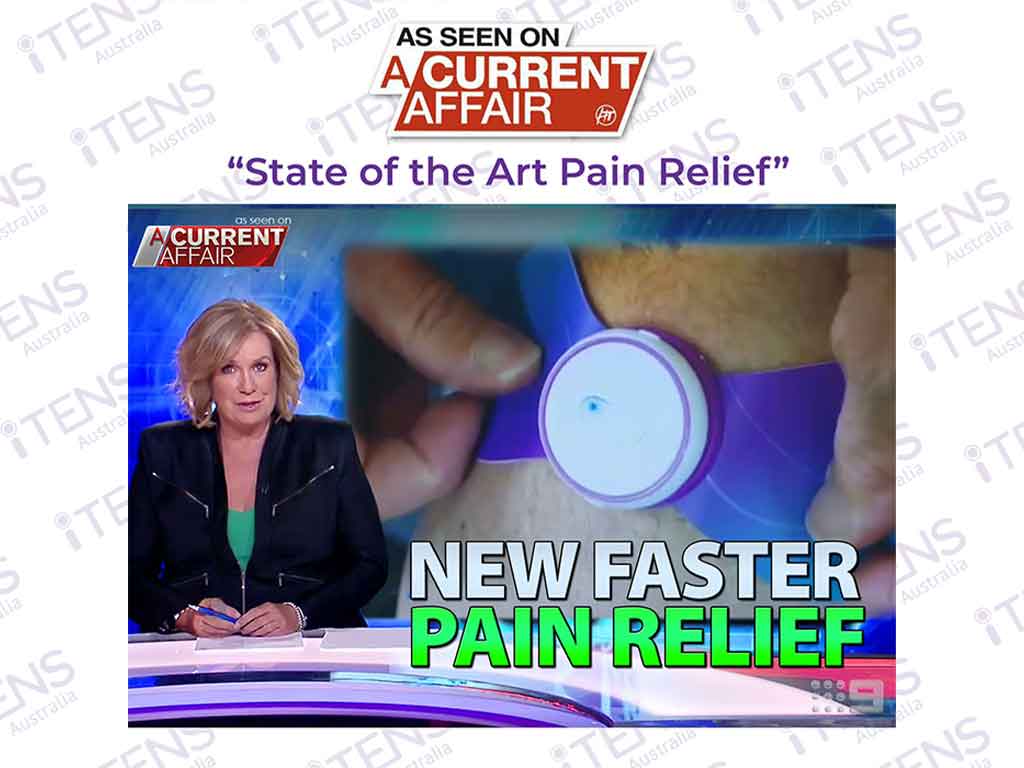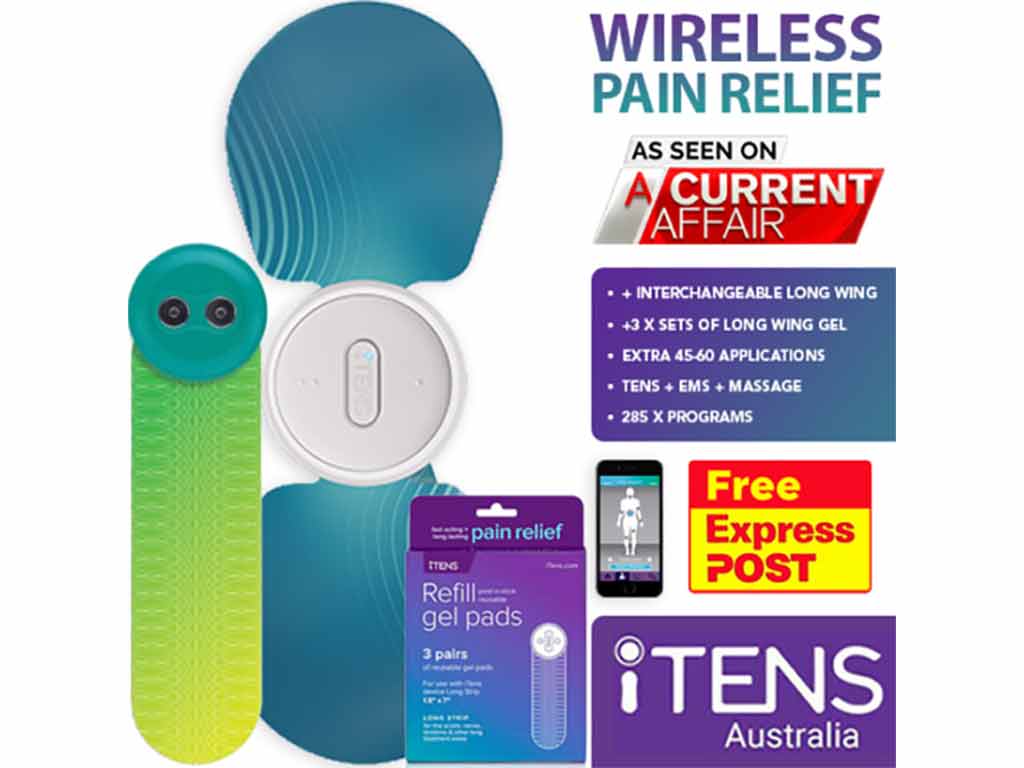
Transcutaneous Electrical Nerve Stimulation TENS is a natural method of pain relief. It utilises a small, battery-operated device to send electrical current to the nerve fibres. Accordingly, the mechanism of action for TENS involves two primary theories. The pain gate mechanism and Endorphin Release Theory. With such mechanisms, TENS therapy can treat various types of pain. It can manage acute pain and chronic pain. Additionally, it can address musculoskeletal pain, neuropathic pain, and muscular discomfort.
Living with painful conditions can have a significant impact on the quality of life. Coping with pain daily can be exhausting and debilitating. Fortunately, there are ways to manage and alleviate discomfort. Commonly, individuals use pain medications or undergo surgery. However, these pain control solutions may have unwanted side effects. As a result, many seek other pain management methods like TENS therapy. This article will present TENS, its mechanisms of action, and the treatable types of pain.
What is a Transcutaneous Electrical Nerve Stimulation TENS?
Transcutaneous Electrical Nerve Stimulation TENS is a treatment of pain that uses a device to deliver electric currents to the body. It streams the electrical impulses through electrode pads placed on the skin. Accordingly, this technique is widely embraced by individuals suffering from various pain characteristics. Pain clinics and medical professionals often recommend TENS therapy.
There are two primary types of TENS devices: traditional and wireless. The traditional TENS units are connected to the electrodes via lead cables. Conversely, wireless TENS units offer more flexibility and convenience. It eliminates the need for physical wires. Individuals can manually control the electrical stimulation directly on the electrodes or through a smartphone app via Bluetooth connectivity.
Using a TENS unit involves several simple steps. Firstly, locate the treatment area and prepare the skin over it. It ensures good adhesive connection and the effectiveness of TENS. Secondly, position the electrode patches. Adhering to the proper electrode placement is crucial in this step. Then, turn on the TENS device. Finally, customise the settings and initiate the therapy.
Benefits of TENS Therapy
- Non-invasive and drug-free: TENS therapy provides natural pain relief. It does not require surgical procedures or the intake of medications.
- Targeted relief: By placing the electrode patches directly or near the area of discomfort, TENS allows for precise targeting.
- Adjustable: Users can tailor the frequency, intensity, and duration of the electrical stimulation.
- Cost-effective: The initial investment in a TENS unit is relatively low compared to ongoing costs of prescription medications or frequent clinic visits.
- Adjunctive: TENS can be used with other therapies to enhance the active treatment.
- Convenient: Individuals can use the device at home, work, or on the go.

Mechanisms of Action Behind Transcutaneous Electrical Nerve Stimulation TENS
Transcutaneous Electrical Nerve Stimulation TENS operates through various mechanisms of action. Foremost, TENS therapy stimulates the production of endorphins. These are the natural chemicals of the body that act as natural painkillers. Endorphins bind to opioid receptors in the brain and spinal cord. Hence, it provides a reduction in pain intensity and induces feelings of well-being.
Secondly, the pain gate mechanism plays a crucial role in the effectiveness of TENS. It is rooted in the theory that the nervous system can only process limited sensory information. Accordingly, it suggests that the electrical impulses from TENS can essentially block the pain signals from reaching the brain. By delivering non-painful signals, TENS makes it harder for pain messages to pass through the “gate” and reach the brain.
In addition, TENS treatment aids in enhancing blood flow in the treatment region. The electrical pulses from TENS encourage the dilation of blood vessels. Improved blood circulation facilitates the delivery of oxygen and nutrients. Thus, it aids in healing and reducing inflammation. Nevertheless, it contributes to the reduction of discomfort and supports the natural healing process of the body.
Frequencies and Intensities
TENS machines generate electrical impulses that the user can adjust in terms of frequency (measured in Hertz (Hz)) and intensity (measured in Milliamperes (mA)). It varies from person to person. Frequency refers to the number of electrical pulses delivered per second. It operates in low and high frequencies. Low-frequency TENS or acupuncture-like TENS (1-10 Hz) is beneficial for prompting endorphin release. Meanwhile, high-frequency (50-120 Hz) is valuable in triggering the “gate control” mechanisms.
On the other hand, intensity refers to the strength of each pulse. It determines how intense the electrical impulses penetrate. Generally, the sensation should be solid yet comfortable.

Types of Pain Treated with Transcutaneous Electrical Nerve Stimulation TENS
Transcutaneous Electrical Nerve Stimulation TENS therapy can treat various types of pain. Foremost, TENS can manage acute conditions. It arises suddenly and often results from postoperative pain, labour pain, period pain, and primary dysmenorrhea. Secondly, TENS can aid in chronic pain. It persists for long periods of time, usually months or even years. It may include arthritis, fibromyalgia, neck, shoulder, and backaches.
Thirdly, TENS treatment is beneficial for addressing neuropathic conditions. It arises from damaged nerves. It may include medical conditions like phantom pain, sciatica, and diabetic neuropathy. Fourthly, TENS is valuable for treating musculoskeletal pain. It affects the bones, joints, muscles, ligaments, and tendons. Conditions like joint pain, rheumatoid arthritis and osteoarthritis fall into this category.
Moreover, TENS can provide relief to muscular discomfort. It arises due to muscle tension, overuse, or injury. The electric nerve stimulation can help relax the muscles, reduce discomfort, and promote healing. Overall, TENS therapy offers a versatile, non-pharmacological therapy for pain management. TENS has the potential to provide significant relief.
Are There Potential Side Effects?
TENS may come with potential side effects. These effects are generally mild and manageable. Firstly, skin irritation stands out as a common side effect. It occurs at the site where the electrode patches adhere to the skin. Nevertheless, users can mitigate this by regularly checking the skin, avoiding broken skin, and cleaning the skin.
Allergic reactions can also occur. Using hypoallergenic pads often eliminates this potential side effect. Additionally, muscle twitching represents another possible risk. It occurs when the electrical pulses from the TENS unit are set too high. While this is typically harmless, it can be uncomfortable. Adjusting the settings can mitigate this effect.
Conclusion
Overall, Transcutaneous Electrical Nerve Stimulation TENS is a widely used and effective pain management technique. It utilises a wired or wireless device that delivers electrical currents through the skin to the underlying nerves. Accordingly, it is often recommended by professionals and clinics. Furthermore, TENS therapy involves various mechanisms of action. It includes the Pain Gate Theory and the Endorphin Release Theory. Also, it can improve blood circulation in the treatment area.
The electrical pulses from TENS can also stream in different frequencies (low and high) and frequencies. Moreover, TENS treatment provides numerous benefits. It is non-invasive, drug-free, adjustable, cost-effective, convenient, adjunctive, and can present targeted relief. With such mechanisms and benefits, TENS therapy can treat various types of pain. It may include period cramps, arthritis, sciatica, osteoarthritis, and muscle tension. However, knowing the potential side effects of TENS is crucial.







